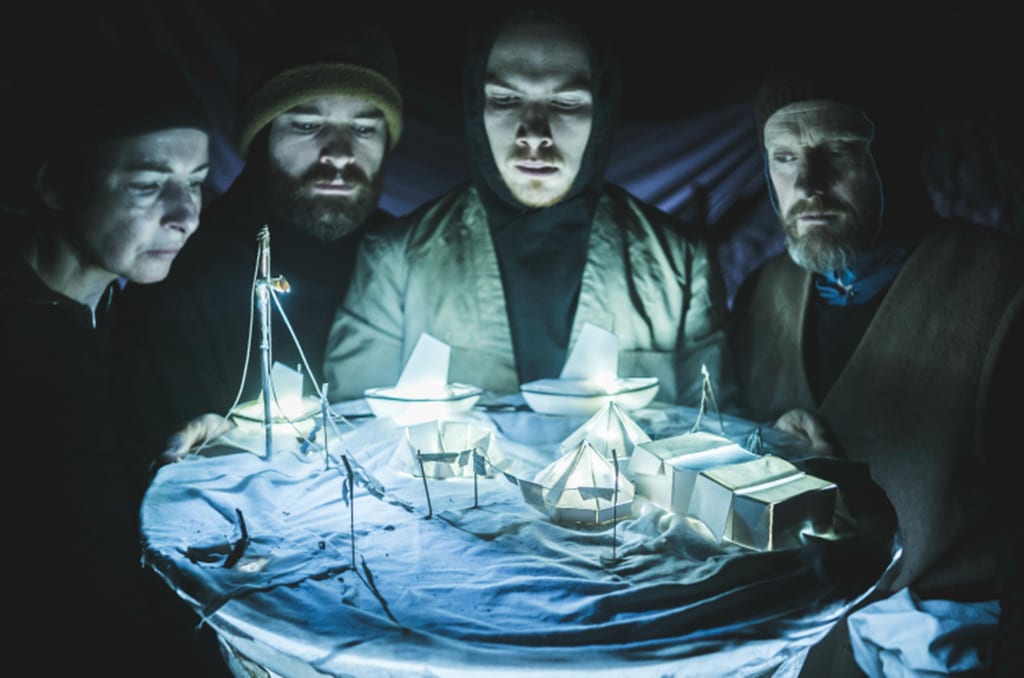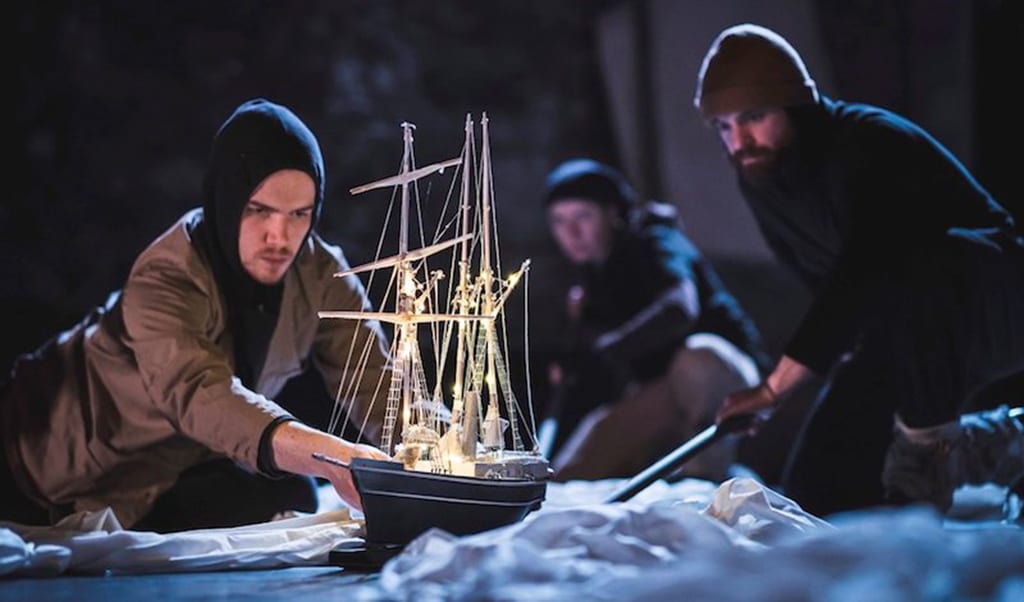 From 1914 to 1917, the explorer Ernest Shackleton and his crew went on an expedition to cross the Antarctic on board the Endurance. The ship became trapped in ice, and sank irrevocably after being crushed, leaving the men stranded and reduced to camping on icebergs, before using their lifeboats for a heroic 800-mile journey to South Georgia. Out of this adventure, the Blue Raincoat Company have created a beautiful anti-epic.
From 1914 to 1917, the explorer Ernest Shackleton and his crew went on an expedition to cross the Antarctic on board the Endurance. The ship became trapped in ice, and sank irrevocably after being crushed, leaving the men stranded and reduced to camping on icebergs, before using their lifeboats for a heroic 800-mile journey to South Georgia. Out of this adventure, the Blue Raincoat Company have created a beautiful anti-epic.
Half performance, half puppet theatre, Shackleton is slow but never dull, hushed and minimalist. We never hear the actors’ voices, the only sounds come from the wind and the crackling ice. The ocean is the dark floor of the stage, and the icebergs are white sheets spread out and held up to form waves, mountains or islands of ice. The actors move with caution, miming football games and plodding against the freezing assaults of an invisible storm. As one of the actors hold a lit-up ship model, a miniature of Shackleton’s Endurance whose lights flicker and vanish, the audience stoop towards the actors and hold their breath and I do, too.
The production leaves little space to acting, privileging gestures and puppetry, and turning Shackleton’s expedition into an onstage exploration of silence. Rather than dehumanizing this incredible feat, Niall Henry’s creation gives this theatrical voyage an otherworldly dimension that is, in a sense, rather faithful to the original. The four-strong cast that embody Shackleton’s crew (of whom 22 survived, as we are told at the end of the production) seem as isolated on stage as the crew must have been then, left to survive amid a hostile, desert environment.
Barry McKinney’s eerie lighting design leaves most of the stage in almost total darkness, drawing the gaze towards tiny portions of space – simultaneously magnifying the smallest details and gestures, and suggesting the immensity of the space that surrounds Shackleton and his crew. A sheet made to suggest a tent becomes a screen revealing the silhouette of a man. Another sheet, wrapped up in a bundle and held at the end of a rod, becomes a cloud shining with thunder.
Shackleton’s slowness requires a certain degree of attention from theatregoers, but generously rewards it by its visual inventiveness and talent for suggesting a story with silent actors and objects.


